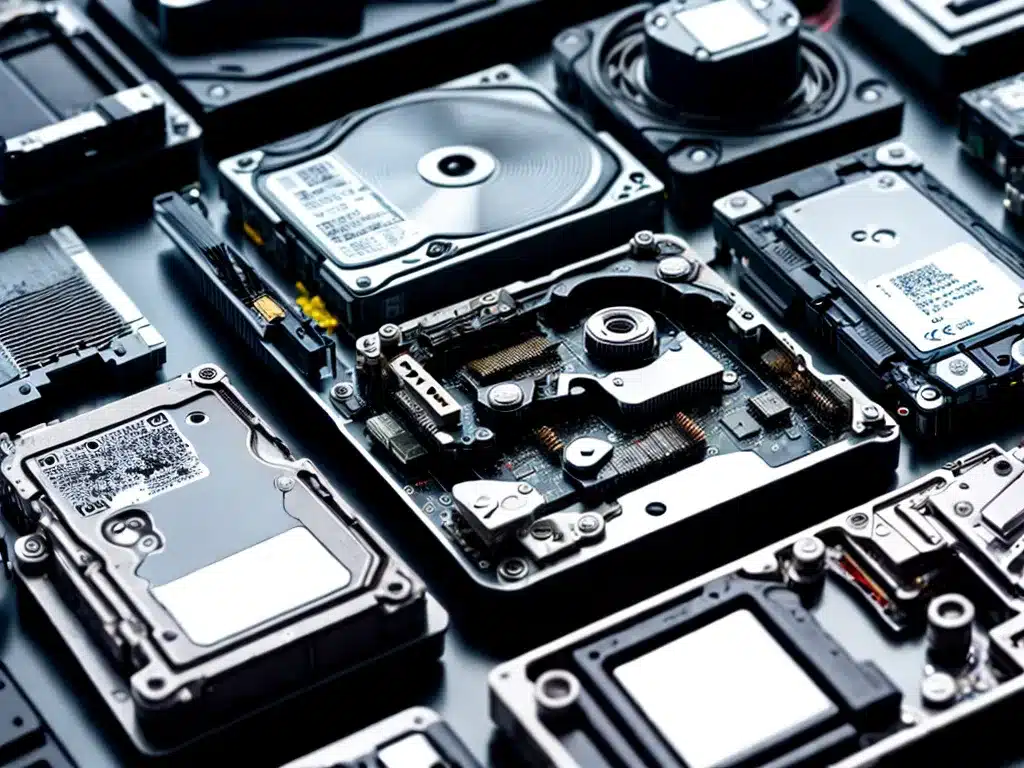
Introduction
Data loss can have devastating consequences for businesses and individuals. When data is stored on RAID or SAN architectures, specialized data recovery techniques are required to restore lost information. As a data recovery expert, I will explore the various options for recovering data from these enterprise storage systems.
Understanding RAID
RAID (Redundant Array of Independent Disks) is a data storage technology that combines multiple disk drives to increase performance, capacity, and reliability. There are several RAID levels, each with different configurations:
- RAID 0 – Disk striping for increased performance. No redundancy.
- RAID 1 – Disk mirroring for fault tolerance.
- RAID 5 – Distributed parity stripes for redundancy.
- RAID 6 – Double distributed parity stripes.
- RAID 10 – Striped mirrored volumes.
The key point about RAID is that data is spread across multiple disks. While this improves redundancy, it also means that multiple disk failures can make data recovery complex.
Understanding SAN
A storage area network (SAN) provides access to consolidated block-level data storage. SANs are primarily used in enterprise environments:
- SANs use fast interfaces like Fibre Channel for high performance.
- Storage devices appear to servers as locally attached drives.
- Enables sharing storage between multiple servers.
- Data is stored on remote storage arrays.
Like with RAID, the distributed nature of SAN storage can complicate data recovery when failures occur.
RAID Data Recovery Techniques
Several techniques exist for recovering data from failed RAID arrays:
Rebuild the Array
If the RAID configuration is still intact, the array can often be rebuilt using surviving disks. However, this requires that the RAID level has adequate redundancy.
Access Disks Directly
Drives can be mounted individually to recover data. Useful when the RAID controller has failed.
Chip-Off Forensics
Removing and reading NAND flash chips from disk drives using specialized tools. Allows data recovery even from mechanically damaged drives.
Repair Drives First
Damaged drives must often be repaired before data can be read from them. Techniques like drive swapping, motor replacements, and disk imaging allow drives to be accessed.
Advanced Recovery Methods
RAID recovery software can analyze parity stripes and drive metadata to reconstruct lost data. Requires highly specialized expertise.
SAN Data Recovery Techniques
Recovering data from SAN architecture brings additional challenges:
Work with Storage Admins
SAN administrators can disable damaged volumes or restrict access during recovery to avoid data corruption. Coordinating with them is key.
Gain Network Access
Since SAN devices appear as local drives, data recovery tools may need to be installed on SAN client servers. Storage admins will need to provide access.
Obtain Configuration Info
The SAN’s cabling, zoning, LUN masking, and virtualization setup needs to be understood. This requires documentation from storage admins.
Send Drives to a Lab
If drives must be repaired or restored, they will need to be removed from the SAN and sent to a specialized data recovery lab equipped for this task.
Restore from Backups
Restoring data from backups is the ultimate fallback option. Ensure backup verification testing is done regularly.
Choosing the Right Service Provider
With RAID and SAN recovery, specialized expertise is a must. When selecting a data recovery provider, important considerations include:
- Specific experience with complex storage systems like large RAID, SAN, NAS, etc.
- Class 10 ISO 4 cleanroom for safe drive repair and chip-off services.
- Vendor partnerships with major storage system brands.
- Certified engineers trained on various storage architectures.
- Success rates recovering from different types of storage failures.
Investigating these credentials rigorously allows identifying the best partner for RAID and SAN data recovery.
Conclusion
Recovering lost data from RAID and SAN environments requires advanced skills. While in-house IT can handle basic issues, severe cases need specialized service providers with extensive storage recovery expertise. With the right partner, companies can avoid costly downtime and data loss when complex storage failures occur.












